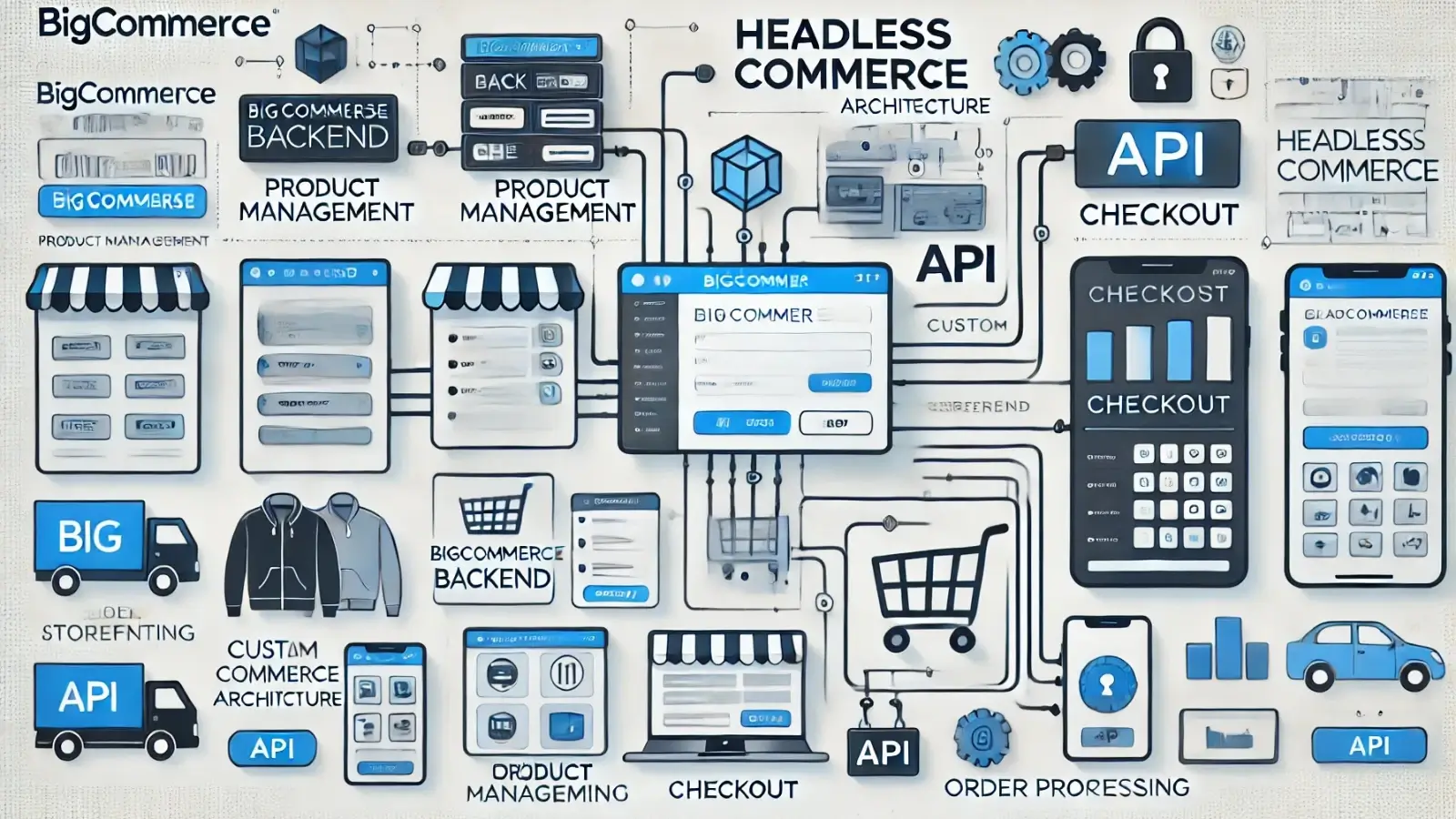


The world of eCommerce is evolving at an unprecedented pace, driven by rapid technological advancements and changing consumer behaviors. In today’s digital-first economy, customers expect seamless, personalized, and highly engaging shopping experiences across multiple devices and platforms. They no longer confine their shopping to desktop websites; instead, they engage through mobile apps, social media channels, smart home devices, voice assistants, and even augmented reality (AR) or virtual reality (VR) experiences.
To meet these demands, businesses need an agile and scalable solution that can break free from the constraints of traditional eCommerce platforms. This is where BigCommerce Headless Commerce emerges as a game-changer, offering businesses unparalleled flexibility, performance, and control over their digital storefronts.
In this comprehensive guide, we’ll explore why BigCommerce Headless Commerce is the future of online retail, its key benefits, and how businesses can leverage it to stay ahead of the competition.
Traditional eCommerce platforms are often built as monolithic systems, where the frontend (the user interface) and the backend (the commerce functionality) are tightly coupled. While this approach simplifies development for small to medium-sized businesses, it comes with limitations:
Design restrictions: Brands struggle to create unique and engaging digital experiences.
Scalability challenges: As traffic and product catalogs grow, performance can suffer.
Limited integrations: Connecting with third-party applications can be difficult.
Headless commerce decouples the frontend from the backend, allowing businesses to use an API-driven approach to build and customize their online presence freely. With BigCommerce’s headless solution, companies can use any frontend technology (React, Vue.js, Angular, etc.) while still leveraging the powerful commerce functionalities of BigCommerce’s backend.
BigCommerce Headless Commerce allows businesses to break free from restrictive templates and create fully custom storefronts using modern frontend frameworks like Next.js, Nuxt.js, and Gatsby. This level of customization helps brands:
Develop a completely unique and engaging UI/UX.
Optimize websites for better conversion rates.
Ensure consistency across all digital touchpoints.
Speed is a critical factor in eCommerce success. Studies show that even a one-second delay in page load time can reduce conversions by 7%. BigCommerce’s headless approach enhances performance through:
Static Site Generation (SSG): Preloading pages for instant access.
Server-Side Rendering (SSR): Improving load times and SEO rankings.
API-first Architecture: Reducing backend processing delays.
With these optimizations, businesses can create fast-loading storefronts that improve user experience (UX) and search engine rankings (SEO).
Modern consumers interact with brands across multiple channels. BigCommerce enables businesses to provide seamless omnichannel experiences, including:
Mobile apps
Social media platforms (Facebook, Instagram, TikTok)
IoT-enabled devices
AR/VR applications
Marketplaces like Amazon and eBay
This ensures that customers receive a consistent shopping experience, no matter where they engage with your brand.
BigCommerce integrates seamlessly with popular Content Management Systems (CMS) such as:
WordPress (ideal for content-heavy sites)
Contentful, Strapi, Sanity (for structured content management)
Adobe Experience Manager, Drupal (for enterprise-level solutions)
Additionally, it connects effortlessly with essential business tools, including:
CRM platforms (Salesforce, HubSpot)
ERP solutions (SAP, Oracle)
Payment gateways (Stripe, PayPal, Square)
For businesses experiencing rapid growth, BigCommerce provides enterprise-level scalability with features like:
Multi-storefront support (run multiple brands from a single backend)
Multi-currency pricing and localized content (expand into global markets)
Advanced analytics & reporting (gain actionable insights into customer behavior)
The checkout process is one of the most critical aspects of eCommerce. BigCommerce offers multiple checkout solutions to cater to different business needs:
Redirect Checkout: A PCI-compliant BigCommerce-hosted page.
Embedded Checkout: Allows seamless transactions within the site.
Self-Hosted Checkout: Full control over checkout UX and customization.
With the Checkout JavaScript SDK, businesses can build fully customized, frictionless checkout experiences that boost conversion rates and reduce cart abandonment.
As eCommerce continues to evolve, BigCommerce is at the forefront of technological innovation. Key trends shaping the future include:
AI-driven personalization: Leveraging machine learning to create individualized shopping experiences.
Voice commerce & smart assistants: Enabling transactions through Alexa, Google Assistant, and Siri.
Blockchain integration: Enhancing payment security and transparency.
Augmented Reality (AR) & Virtual Reality (VR): Providing immersive product experiences.
Businesses that adopt these innovations early will gain a competitive advantage in the digital marketplace.
The shift towards headless commerce is revolutionizing the way businesses build and scale their eCommerce operations. By leveraging BigCommerce Headless Commerce, brands can:
Create highly customized and engaging storefronts.
Improve site performance and SEO rankings.
Expand into new markets and sales channels.
Future-proof their business with cutting-edge technology integrations.
For businesses seeking to enhance their B2B eCommerce strategy, partnering with a B2B eCommerce development agency can streamline the transition to headless commerce, ensuring seamless integrations and optimized performance. In a world where customer expectations are constantly evolving, BigCommerce provides the flexibility, scalability, and future-ready architecture that modern businesses need to stay ahead.
Now is the time to embrace the future of eCommerce with BigCommerce Headless Commerce and position your brand for long-term success.